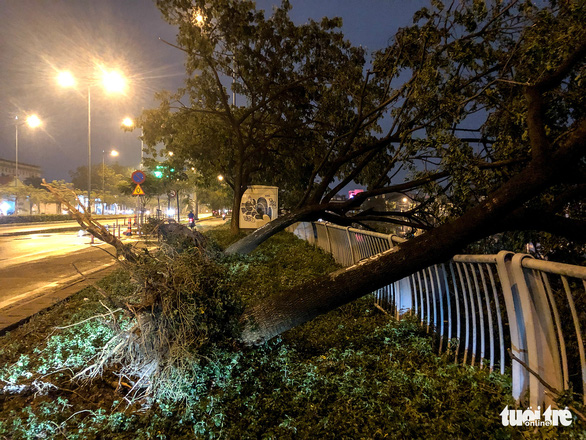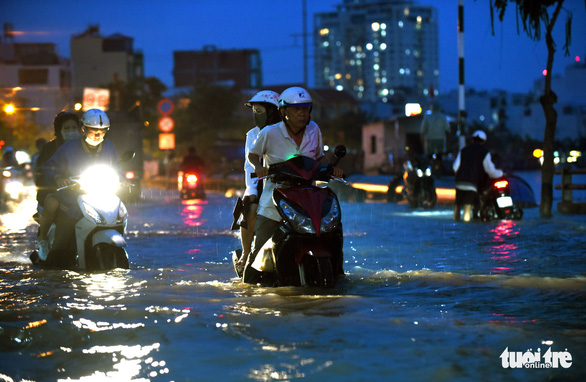Rain, flooding, dangerous winds, rising temperatures, and record-breaking high tides have all risen sharply over the last 40 years, the evidence of climate change in Ho Chi Minh City.
Ho Chi Minh City saw its average yearly temperature rise by 0.7 degrees Celsius between 1977 and 2011, while precipitation levels have increased by over 100 millimeters, according to a report on the implementation of the Paris Agreement on climate change published by the municipal People’s Committee.
Rainfall is also on the rise with instances of torrential rain surging over the past few years.
The city is faced with severe flooding as water levels recorded near its coast are rising, which is exacerbated by heavy rainfalls.
High tides in Ho Chi Minh City are on an upward trajectory with water levels continuously breaking previous records.
According to data collected from Phu An Station, nine instances of extremely high tides hit the city in 2017, with tide levels reaching 1.71 meters in December – the highest recorded since 1960.
In 2018, a total of seven peak tides which surpassed level three on Vietnam’s flooding scale were recorded.
The situation was even more alarming in 2019 as flooding in Ho Chi Minh City soared to an all-time high of 1.77 meters in September.
Increasingly high tides threaten local residents with dam breakage, especially citizens in District 8 and District 12, which are the two areas hit the hardest by flooding.
Data from the report draws a full picture of the devastating effect that climate change has on the city, specifically the most vulnerable people in the city.

Considering the situation, the Ho Chi Minh City People’s Committee put forward three sets of goals to tackle climate change.
The first goal aims to reduce greenhouse gas emissions, with six programs scheduled in 2020 and 20 to be completed from 2021 to 2030.
The second seeks to enhance climate change adaptability, with seven programs for 2020 and 17 to be completed from 2021 to 2030.
The last looks to enhance the city’s manpower, with plans to build capacity for tackling epidemics, adverse weather, and catastrophes for medical practitioners of ward- and commune-level facilities.
Like us on Facebook or follow us on Twitter to get the latest news about Vietnam!




















































